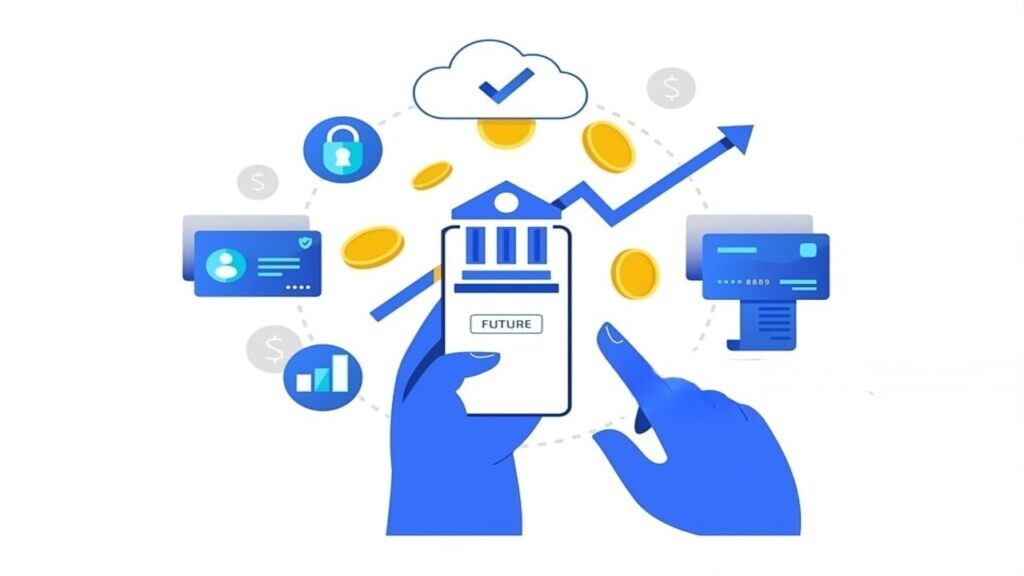
The banking industry is changing, thanks to fintech software development.
Fintech software is basically technology that makes financial services better and more automated.
Making software for banking apps is only part of it.
We’re talking about coming up with new ways to power everything from payment processing and lending platforms to cryptocurrency exchanges and investment management.
But why is this so important?
Because the global economy depends on financial services. Fintech software development solutions are changing the way we think about banking, money and investing.
In this article, we’ll talk about how fintech software development works and how you can use it to make cutting-edge financial technology solutions.
Table of Contents
ToggleWhy it’s important for the financial industry to have Fintech software development
The financial industry is changing quickly and software fintech is at the center of this change.
There are a number of important benefits to using fintech solutions:
- Speed: Loans, investments and transactions that used to take days now happen in minutes.
- Security: Fintech software development solutions are safer than traditional systems because they use blockchain, encryption and other modern security protocols.
- Accessibility: Fintech apps make it easier for people to get financial services, especially in areas that don’t have many of them.
- Efficiency: AI and automation cut down on manual work, lower the number of mistakes made in operations and make costs more efficient.
Deloitte says that by 2023, more than 64% of people throughout the world had utilized at least one fintech platform, showing that fintech software development is not just a trend but a need.
Fintech software development is no longer an option; it’s a must if the financial world wants to keep up with new technologies.
The main benefits of making fintech software solutions
There are several benefits to making your own software fintech solution.
Here’s why it makes sense to put money into fintech software development, whether you’re a new business or a long-established one:
- Scalability: Fintech platforms are made to grow. Your software should expand with your business, whether you’re making a personal finance app or a system for a big company.
- Better Customer Experience: A mobile or web app that is elegant and responsive makes customers more interested and happy.
- Lowering expenses: Automating tasks like credit scoring, loan approval, or fraud detection cuts down on the amount of work that needs to be done by hand, which lowers operational expenses.
- Making it possible for new ideas to happen: Software fintech lets businesses swiftly develop new products, like peer-to-peer lending, crowdfunding and digital wallets.
- Better return on investment: Experienced fintech software developers help organizations move faster and smarter, which leads to a better return on investment by making financial processes easier.
According to McKinsey, banks and other financial institutions that use fintech platforms achieve an average 20–30% increase in operational efficiency in the first year.
TIP: List the problems your platform is meant to answer before you start constructing it. Make sure your features match business KPIs like the cost of acquiring new users, the conversion rate, and the average revenue per user (ARPU).
In a world where digital comes first, people who adopt fintech software development early will have higher profit margins and a long-term edge over their competitors.
Different kinds of fintech apps you may make
Software fintech solutions can do a lot of things. These are some of the most useful kinds of apps you can make:
| Fintech App Type | Functionality |
| Payment Systems | Mobile wallets, peer-to-peer payments, contactless payment integrations |
| Investment Platforms | Stock trading, cryptocurrency, robo-advisors, portfolio tracking |
| Lending Platforms | Peer-to-peer lending, microfinance, auto loan and mortgage approval systems |
| Blockchain/Crypto Apps | Crypto wallets, DeFi platforms, NFT marketplaces |
| RegTech Tools | Compliance management, audit trail automation, KYC/AML verification |
According to Statista, more than 75% of new financial sector firms are making apps for payments or managing investments by 2024.
Each of these types of fintech apps has a different job to do. The appropriate answer relies on who you want to reach, what the market wants and how you want to make money.
Important Steps for Making Fintech Software
It’s not just about writing code when you build a financial solution. It’s about using safe, scalable and easy-to-use financial technology to solve problems in the real world.
Let’s go over it step by step:
Step 1: Figuring out what you need from your fintech software
Before you create any code, you need to be clear.
Think about:
- What is the main goal of the app? for example, payments, investment or lending?
- Who do you want to reach, individuals, small enterprises or big companies?
- What important characteristics do you need? (e.g., real-time analytics, multi-currency or wallet integration?)
- What security steps must be taken?
TIP: Make a document that links features to KPIs. If one feature is an “auto loan calculator,” the KPI may be “40% less time spent processing manually.”
Getting your needs set in stone early will help your fintech software developers stay on track and prevent having to make costly changes later.
Step 2: Picking the Right Tech Stack and Development Tools
The tools you use affect how well your app works; how big it can get and how safe it is. Here’s a short look at the differences:
| Tech Stack Area | Popular Tools/Platforms |
| Blockchain Layer | Ethereum, Hyperledger |
| Cloud Infrastructure | AWS, Google Cloud, Microsoft Azure |
| Payment Integration | Stripe, PayPal, Razorpay |
| Security/Compliance | OAuth 2.0, SSL, PCI-DSS toolkits |
| Frontend & Backend | React, Flutter, Node.js, Python |
Gartner says that picking the correct cloud platform can make apps up to 50% more scalable, especially when there are a lot of people using them.
A tech stack that works well together increases ROI by speeding up time to market and making sure it works with future APIs and services.
Working closely with your software fintech team makes sure that your stack fits with your plans and budget.
Step 3: Hiring Developers for Fintech Software
You can have the best concept in the world, but if you don’t have the appropriate people to carry it out, it won’t work.
Here’s what you should look for:
- Proven fintech software development experience: Developers who have worked on digital wallets, payment systems or trading platforms.
- Being aware of rules and regulations: Knowing about GDPR, PCI-DSS, PSD2 and local compliance requirements is very important.
- A security-first approach is very crucial, especially for apps that deal with personal banking or investment data.
- Tech versatility: Developers should be able to work with your preferred language stack and API connections.
According to Accenture Fintech Pulse 2024, 81% of fintech software developers agree that recruiting experienced developers was the most crucial thing they did to make their product successful in the long run.
Picking the proper team makes sure that your path to developing fintech software is safe, efficient and focused on getting outcomes.
Step 4: The Process of Development
It’s time to make your fintech idea a reality now that you have your team and resources in place.
Here’s what a normal development cycle looks like:
1. Making plans and prototypes
Plan out the main user flows and the system’s structure. Make interactive prototypes that show what the app will look like and how it will work.
2. Building the front end and back end
This is when fintech software developers start to make the user interface and link it to safe backend mechanisms. This stage will probably include setting up the database, APIs, user roles and financial logic.
3. APIs that work together
Most software fintech solutions depend on third-party APIs for things like payments, KYC, credit scoring and banking. These connections need to be smooth and safe.
4. Putting security into place
It’s important to have systems for data encryption, two-factor authentication, role-based access and fraud detection.
In the financial sector, a 60-second delay in finding fraud can cost organizations up to $25,000 for each incident (IBM Security Report, 2024).
Design, engineering and compliance are all important elements of good fintech software development.
Step 5: Testing and Deployment
Testing is where everything comes together and a lot of projects fail if they are rushed.
You need to test these important areas:
- Functionality: Do all the functions work as they should on all devices and in all situations?
- Security: Are your files encrypted? Are users safe from phishing and brute-force attacks?
- Load Handling: Can your app manage a lot of traffic at once without crashing or slowing down?
- User Experience: Is it easy to find your way around? Can users do important things in less than three steps?
Your software is ready to be used after going through a lot of testing. First, launch your MVP (Minimum Viable Product), get feedback from users and then make changes.
Faster time-to-markets help users get up early, keep them longer and see a return on investment sooner, especially for VC-backed fintech software development firms.
Fintech Software for Investment Banking
Fintech investment banking is a lot more complicated than regular investment banking.
This is why:
- Investment banks handle a lot of transactions in real time that need very low latency.
- There are a lot more rules to follow (Basel III, MiFID II, FATCA, etc.).
- Systems need to work with global clearing houses and financial exchanges.
The benefits are still worth it.
JP Morgan’s internal fintech software development technologies saved the company more than $150 million a year by automating reconciliation and lowering the number of mistakes made during transactions.
Investment banking fintech software can help with:
- Modeling risk
- Reporting in real time
- Predictive analytics for deals
- Keeping track of compliance with regulations
- Optimizing capital
TIP: Use AI-driven analytics to find strange transactions as they happen. This makes audits less stressful and makes things clearer.
If you’re making fintech investment banking software in this area, you’ll need top-notch infrastructure and a regulatory counsel that is dedicated to your business.
Final Thoughts
Fintech software development is changing how financial services work all around the world. These technologies are making financial solutions faster, safer and easier to get to, from payment systems to investment banking platforms.
Businesses who invest in new fintech software will have a big edge over their competitors as the need for digital financial services develops.
You can make a platform that satisfies the user’s wants and follows complicated rules by following a clear development process. This includes making sure you have clear requirements, choosing the proper technology stack, hiring experienced financial fintech software developers and testing your solution thoroughly. This foundation is very important for long-term success in the fast-changing world of software fintech.
The future of finance is digital and if you start using fintech software development now, your firm will be ready to succeed in the future. There are several chances for you to reach both retail customers and niche markets like fintech investment banking.
Start your journey by focusing on security, scalability and user experience. Your fintech software solution will then become a driver of growth and new ideas.


